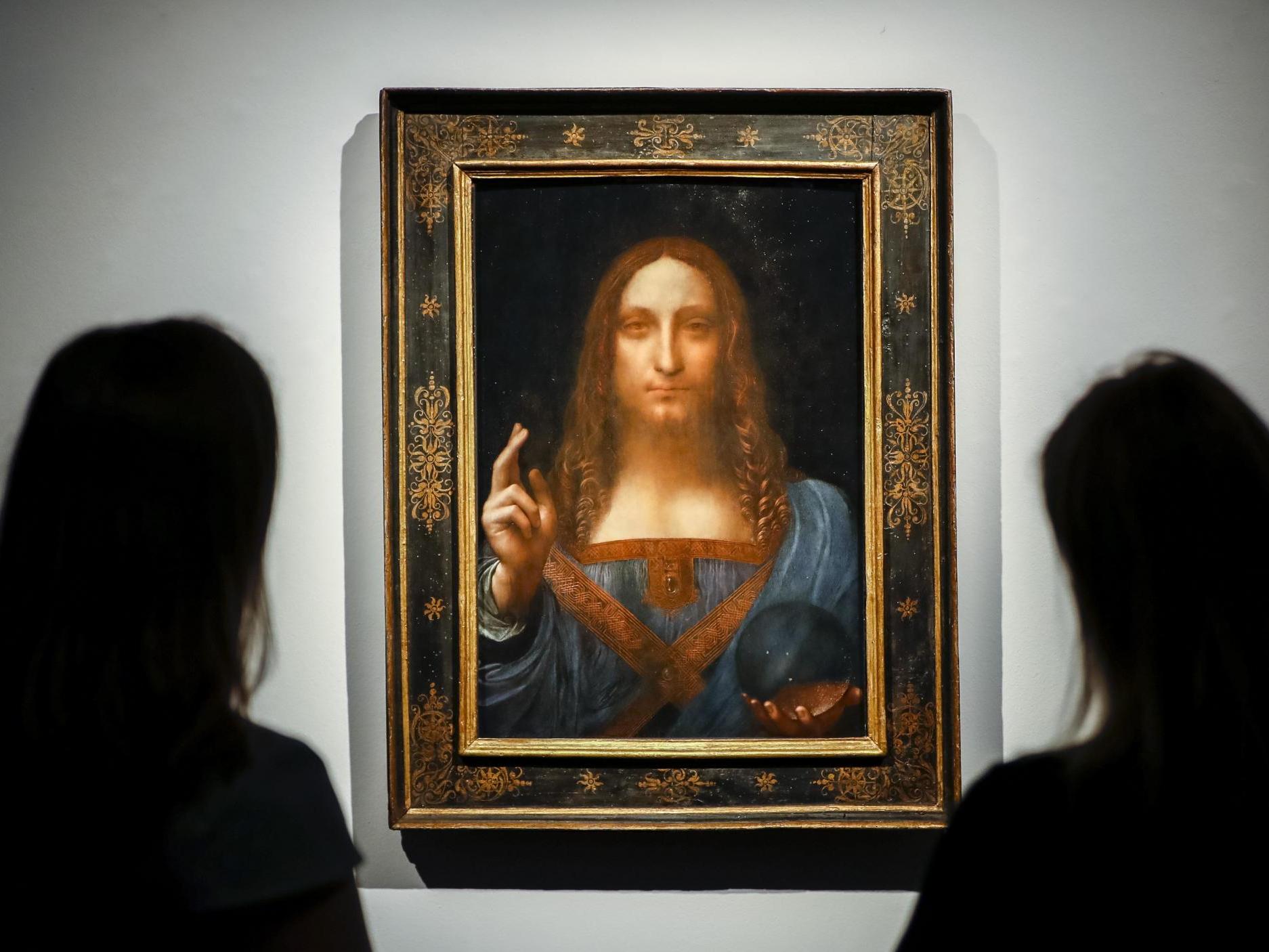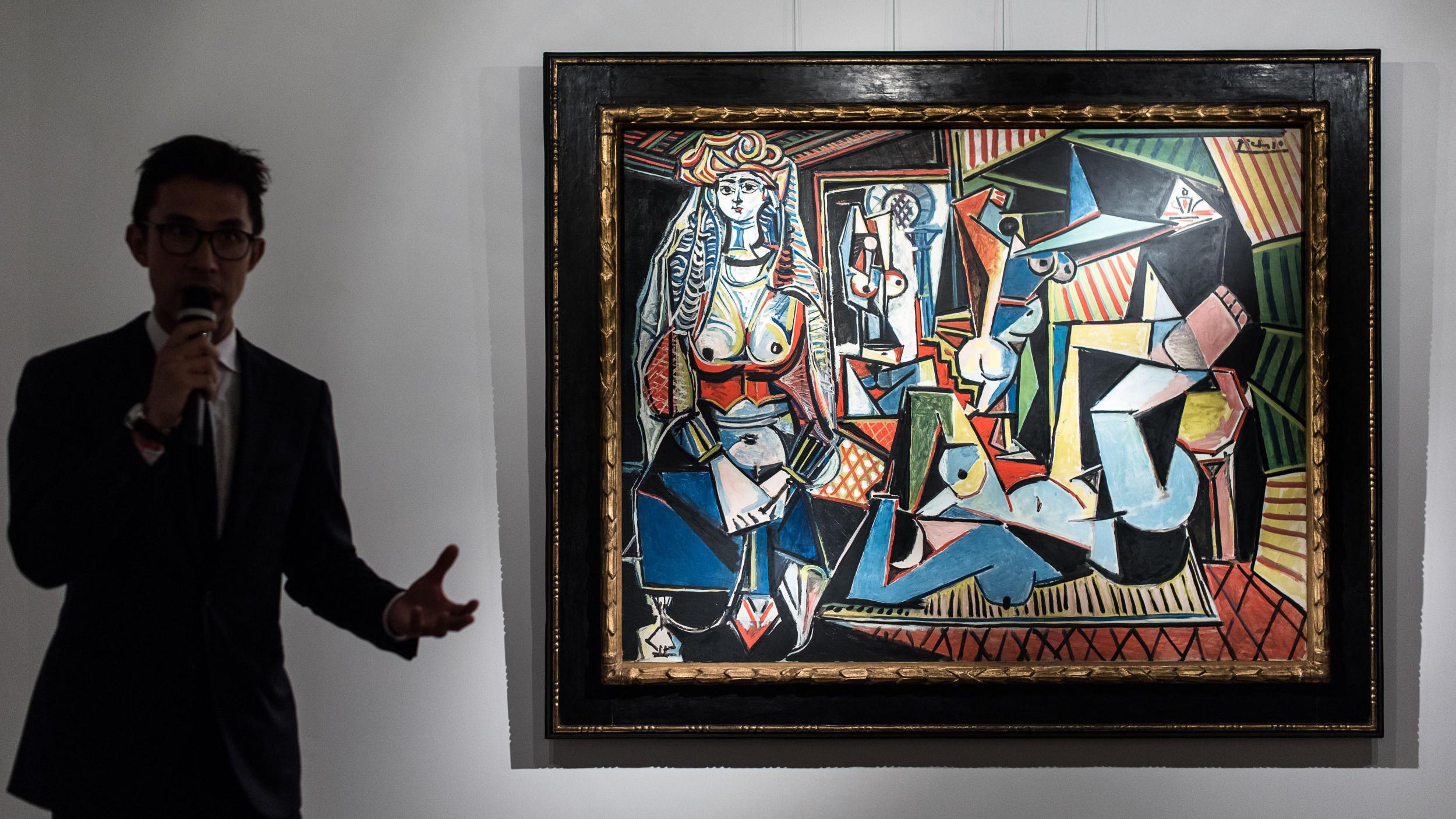‘The Last Leonardo’: One painting’s multi-million pound journey
Almost two years ago, Leonardo da Vinci’s painting ‘Salvator Mundi’ was sold for $450.3m. John Williams speaks to author Ben Lewis about his new book based on the painting’s journey to the auction house

Your support helps us to tell the story
From reproductive rights to climate change to Big Tech, The Independent is on the ground when the story is developing. Whether it's investigating the financials of Elon Musk's pro-Trump PAC or producing our latest documentary, 'The A Word', which shines a light on the American women fighting for reproductive rights, we know how important it is to parse out the facts from the messaging.
At such a critical moment in US history, we need reporters on the ground. Your donation allows us to keep sending journalists to speak to both sides of the story.
The Independent is trusted by Americans across the entire political spectrum. And unlike many other quality news outlets, we choose not to lock Americans out of our reporting and analysis with paywalls. We believe quality journalism should be available to everyone, paid for by those who can afford it.
Your support makes all the difference.In May 2015, Christie’s sold Pablo Picasso’s “Women of Algiers” for $179.4m (£144m), the highest price for a painting at auction up to that point. Two and a half years later, Christie’s sold Leonardo da Vinci’s “Salvator Mundi”, a portrait of Christ, for $450.3m. In his new book, The Last Leonardo, author and documentary filmmaker Ben Lewis writes about the painting’s twisty, contentious road to the auction block and beyond.
“Salvator Mundi”, Lewis writes, is “poised between the medieval and the modern, an image that opens the door to the new world, just as Leonardo himself did”. But it remains the subject of controversy, its whereabouts unclear and its authorship still disputed. “It has become a victim of the secrecy upon which the unregulated art market, and around it the 21st-century globalised economy, is built,” Lewis writes. Below, the author talks about how writing this book was a dream job, the surprise of telling a previous owner of the painting about its ultimate fate, and more.
Q When did you first get the idea to write this book?
A After the painting sold, in November 2017. I thought this was the most amazing adventure story a painting had ever gone through – the history of it, this 500-year purported history. It’s been in palaces and penthouses, and you’d expect that. But it also spent 50 years in American suburbia.
And we’re really not sure about its history. There are incredible blanks, and a lot of subterfuge. No painting I ever read about or studied – and I’ve done quite a bit of art history – has had so many ups and downs. Like Jeff Bridges says in The Big Lebowski, “There’s a lot of ins and a lot of outs.”
Normally my agent is really tough on me: “No one’s going to want to read that”; “that’s not a book, that’s a documentary.” This time, 20 minutes after I sent the idea, she called me up and said, “This is big.”
Q What’s the most surprising thing you learned while writing it?
A Without doubt, the most surprising thing was finding Basil “Tookie” Hendry Jr, the person who inherited the painting and consigned it to auction in New Orleans in 2005 and sold it for $1,175, and learning that he had no idea – absolutely no idea – when I contacted him in 2018 that his picture was now considered to be by Leonardo and had sold for $450m at Christie’s. That’s the most surprising thing I’ve ever discovered in my whole life. I couldn’t believe it – and neither could he when I told him.
He ran a construction business and did not read the culture pages of newspapers. He had no particular interest in art; he just wanted to offload these pictures to the benefit of him and his family.
We weren’t sure if he had owned it. I had tracked down the very obscure auction house catalogue. On the cover of the catalogue, there was a list of names. The owner could have been any of the names, or none of them. One of them was Trent Reznor. I thought, “Trent is a goth, or was; this is the kind of picture he might buy.” How good would that be for my book? But it wasn’t him.

It took me and a colleague five or six months to track down Hendry. When we rang him up, we had no idea whether he had owned this picture or not. He said, “Oh yeah, we did have one of those hanging in the stairwell.”
Q In what way is the book you wrote different from the book you set out to write?
A I wrote the book I set out to write. I wanted to write an art history book that wasn’t an art history book. I wanted to write a thriller about a heist – I don’t mean that in a negative way. But two dealers find this painting and pay a $1,000 for it, and 12 years later it’s worth $450m. That’s a Guy Ritchie film. Or Point Break.
The story had this classic skeleton, and I could weave in Leonardo’s bio, slightly revisionist, and I could also mount an investigation: Was it a Leonardo or not? Here is this old master painting, which tells you everything you need to know about the history of art and the art market and what art has become. I don’t have to give you lots of generalisations about it, all I have to do is tell the story of this painting, fact by fact, and the readers will get it all and make up their own minds.
Every day, I felt like, this is my dream job. This is the best project and subject I’ll ever have. It was difficult to write. Just because I knew what I wanted to do from day one didn’t mean it was easy.
Q Who is a creative person (not a writer) who has influenced you and your work?
A Max Beckmann, the wonderful German Expressionist. His busy themes of life in Berlin in the first half of the 20th century had a huge impact on me at the age of 17, when I was working at an auction house in Munich. There was a Max Beckmann exhibition on, and there was something about his vision of the world – dense and chaotic, but also exuberant.
Two dealers find this painting and pay a thousand dollars for it, and 12 years later it’s worth $450m
And I have to mention one writer. Italo Calvino is my hero. I read Invisible Cities every year. There’s a quote from it in the beginning of my book.
Q Persuade someone to read The Last Leonardo in 50 words or less
A It’s the greatest story of survival in the history of art. It’s basically an art history version of The Revenant – not with Leonardo DiCaprio, but with Leonardo da Vinci. It’s a historical costume drama, a thriller and a detective story all rolled into one.
The Last Leonardo: The Secret Lives of the World’s Most Expensive Painting
By Ben Lewis, Ballantine Books. £11.75
© New York Times
Join our commenting forum
Join thought-provoking conversations, follow other Independent readers and see their replies
Comments